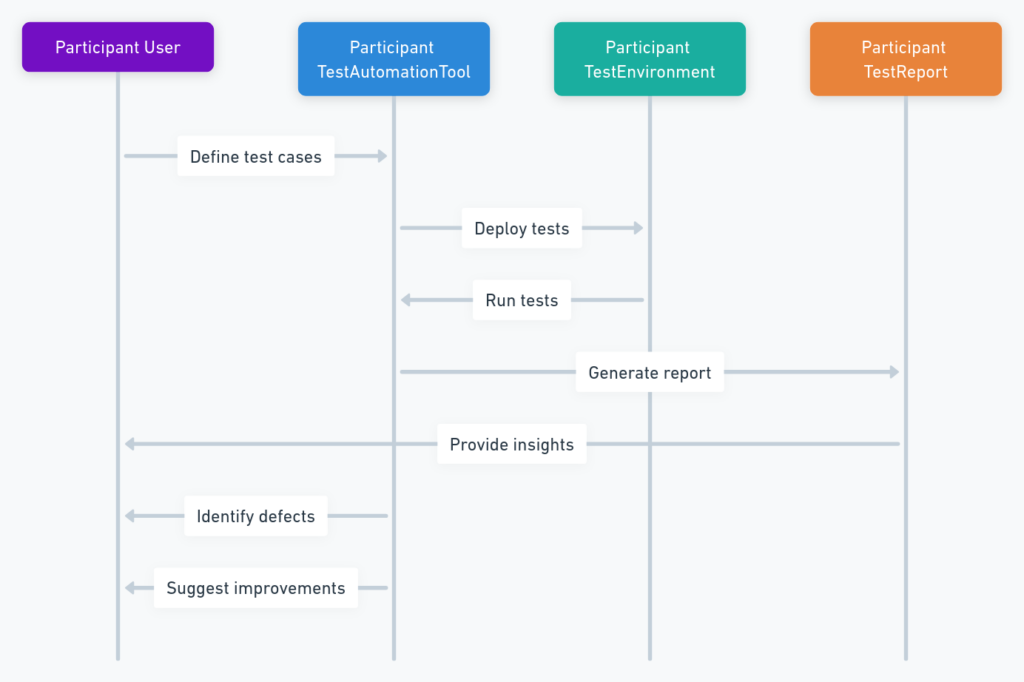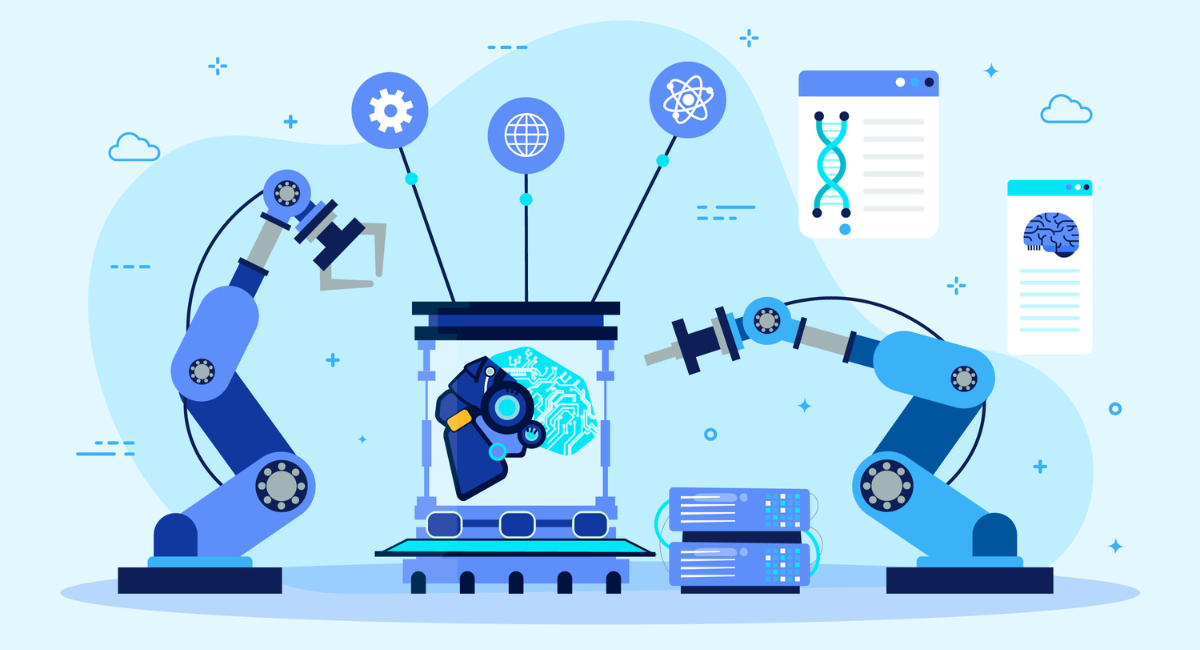In the ever-changing technology of developing software staying on top of the speed of change requires not only speed, but also precision. This is exactly the point where automated test design (ITA) comes in.
An innovative approach that blends the capabilities in AI (AI) as well as machine-learning (ML) along with traditional automation techniques, ITA is transforming the test-taking process for software.
With its ability to provide greater efficiency, accuracy and adaptive testing strategies, ITA is not just improving the performance of software but also dramatically decreasing the time and energy required with testing.
While we go through this overview of intelligent automation of tests will reveal the factors that make ITA an important game changer in the world of software development. We'll also look at the exciting future of this new technology.
What is Intelligent Test Automation?
Intelligent Test Automation (ITA) has revolutionized the world in software testing, bringing an intelligence level and adaptability that was previously impossible to achieve using traditional methods of testing.
It makes use of machine learning as well as artificial intelligence as well as other technologies that improve and automate testing process.
With ITA software, teams are able to attain quicker, more reliable, and more efficient results from testing that are vital for rapid development of top-quality software applications.
Definition of Intelligent Test Automation
Intelligent Test Automation refers to the application of artificial machines and machine learning technology to automatize complicated repetitive tasks in testing that otherwise would necessitate human input.
ITA systems are built to gain knowledge from information, evolve with time and take intelligent choices to speed up the process of testing.
This includes not just running predefined test scenarios, but also developing tests that are completely new, maximizing coverage of tests, and identifying problems faster than before.
Components of ITA
The basis for Intelligent Test Automation is built on several essential components, each of which plays an important role in the performance and efficiency of ITA solutions. The components are:
Artificial Intelligence (AI):
AI can allow ITA solutions to emulate human intelligence, allowing them to analyze the program under test, create tests, and run them and even predict when the next failures could be triggered.
Machine Learning (ML)
Machine Learning (ML) algorithms assist ITA tools to learn from previous data, and adjust their testing strategies according to this information, and increase test results in the course of time.
Natural Language Processing (NLP):
NLP enables ITA solutions to interpret and understand human language, which allows for tests to be created in scenarios in simple English and facilitating for non-technical people to understand testing procedures and the results.
Analytics and Dashboards:
Advanced analytics and dashboards offer insight into the process of testing and highlight any potential problems, as well as track the effectiveness and progress in testing.
Automation Frameworks:
In the heart of ITA are powerful automation frameworks that allow for the creation, execution and administration of automated test cases across a variety of operating systems as well as environments.
Benefits of Intelligent Test Automation

The use of Intelligent Test Automation brings a number of advantages to teams in the development and testing of software which allows them to tackle the issues that modern technology brings with more assurance and efficacy.
Increased Efficiency
One of the biggest benefits associated with Intelligent Test Automation is the significant improvement in the efficiency of testing it provides.
With ITA the amount of time and resources needed to conduct testing are drastically decreased, due to the automated completion of repetitive and lengthy tasks.
This speeding up of testing processes allows to:
- Faster Time to Market: Automated testing using ITA results in software can be designed, evaluated, and released faster than traditional methods of testing.
- Seamless Integration: ITA tools can easily integrate with other tools and systems in the development pipeline, facilitating continuous testing and continuous integration/continuous deployment (CI/CD) practices.
- The ability to scale: ITA enables testing at scale, handling large quantities of test data as well as complicated test scenarios with no need to invest significant increase in resources for testing.
Improved Accuracy
Another important advantage that comes with Intelligent Testing Automation is the enhancement of the accuracy of test results.
Human testers, though valuable for certain kinds of tests, could unintentionally introduce errors in the testing process and are not always able to detect the root of all problems.
ITA is, in contrast it offers:
- Reduction of Human Errors: Automated tests aren't prone to the errors and omissions that could be experienced with manual testing, resulting in more reliable test results.
- Enhanced Error Detection: The intelligence abilities of ITA tools enable them to spot the source of errors with greater accuracy and in real-time and often catch issues that are overlooked through manual testing.
- Continuous Learning and Improvement Continuous Learning and Improvement: ITA systems gain knowledge from every testing cycle They become more proficient in identifying problems and predicting possible failure points, constantly improving the quality of testing.
The development of Intelligent Test Automation is not an unintended trend but rather fundamentally changing the way software testing is seen and implemented.
With its ability to bring efficiency, intelligence and accuracy to the testing process ITA is at the cutting edge for the next generation of development software.
It gives an insight into a future that delivers high-quality software more quickly and with greater reliability more than it has ever been.
The Future of ITA
The world of Intelligent Test Automation (ITA) is rapidly changing, driven by technological advancements and the increasing demand for efficiency and quality in software development.
Future developments in ITA promises revolutionary changes, not just in the manner that tests are performed but also in the entire cycle in the development of software.
Recognizing the current trends and anticipating future developments will help you understand how ITA will impact the software testing process in the coming years.
Current Trends in ITA
In the present, a number of key developments are transforming this ITA landscape. First the use with Artificial Intelligence (AI) and Machine Learning (ML) within ITA tools is becoming more widespread.
These technologies allow for more advanced evaluation of the test's results as well as predicting the possibility of failure, and automatizing complicated testing scenarios.
Another important change is the trend to Continuous Testing in the DevOps framework, in which software is constantly tested throughout the development process, rather than in predetermined times.
This requires strong ITA tools that can keep up with rapid deployment cycles. There's also a push towards greater collaboration between the operational and development teams and is which is supported with ITA tools that help to improve collaboration and speed up processes.
Anticipated Developments in the ITA Landscape
As we look to the future, several advancements are anticipated to propel the development of ITA. The application of AI and ML in ITA is expected to grow and play an increasingly important role in the generation and execution of tests, and in the detection of anomalies.
This will lead to more proactive and predictive testing methods, which will minimize the risk of errors in the real-world environment.
In addition, the concept of self-healing test scripts, in which automation frameworks are able to automatically modify and modify test scripts when the test application develops, is growing in popularity.
This will significantly cut down maintenance costs and increase the accuracy of tests. Integration with cloud-based services is a further sector that is poised to grow that will allow scalable, on-demand testing resources, and making it easier to test in a broader range of settings and environments.
Potential Impact on Software Testing Processes
The technological advances in ITA will revolutionize the process of testing software. The increasing dependence on AI and automation could improve the efficiency of testing by reducing the amount of time and energy required for regression testing, and making it easier for Quality Assurance (QA) experts to focus on more strategic aspects of quality control.
Continuous testing in agile and DevOps practices will lead to quicker time to market, with software being checked and tested in real time.
The increased technological sophistication in ITA tools will also increase the capability to spot and correct defects early in the development process which will improve the quality of software as well as decreasing post-release errors.
Additionally, the use of ITA will result in more open testing, in which non-technical participants can take part in the testing process using easy-to-use automatic testing instruments.
This involvement in a holistic manner can create an overall organization-wide quality culture making software excellence an integral part of the work.
The future for ITA is certain to be bright and it has the potential to simplify and improve the quality of software testing.
As technology advances as well, so will the capabilities and effectiveness of automated testing that is intelligent during the development of software.
Book a Demo and experience ContextQA testing tool in action with a complimentary, no-obligation session tailored to your business needs.
Conclusion
Intelligent Test Automation (ITA) is rapidly changing the face of testing and development of software.
Through the use of advanced technologies such as AI or ML, ITA pushes the boundaries of traditional methods for testing which allows for greater precision, efficiency and coverage.
As software is becoming more complex, the need for ITA is expected to increase in the coming years, bringing innovation and encouraging higher-quality, more durable software products.
The future for ITA is bright, with the potential for developments that include predictive analytics, more intelligent test generation and self-healing tests capabilities.
These technologies promise to reduce manual work accelerate development processes and increase general quality and efficiency of applications.
As developers and companies take on ITA and its benefits, we can anticipate to see a shift toward more flexible, adaptable and efficient testing methods.
The direction of ITA is evident It isn't only altering the ways software testing is done and establishing new standards for excellence in software.
Also Read - Smart Testing vs Traditional Testing: Understanding the Differences
We make it easy to get started with the ContextQA tool: Start Free Trial.
